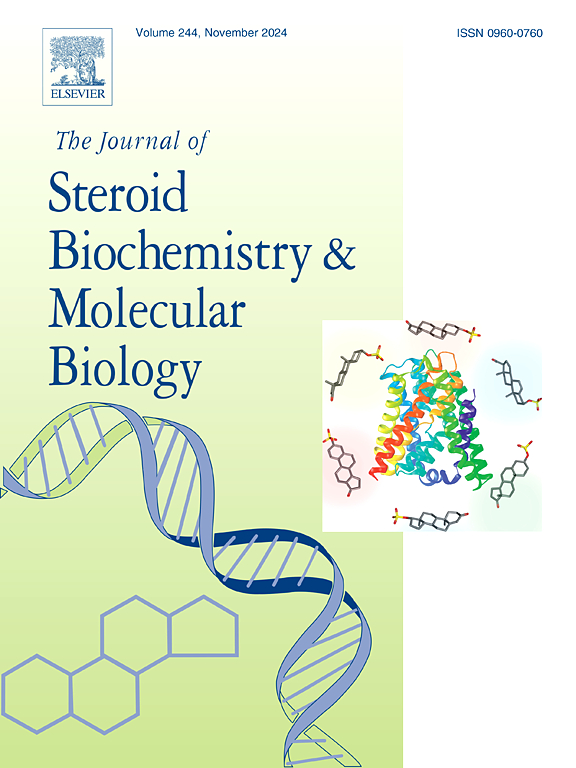多囊卵巢综合征:颗粒细胞增殖和凋亡在疾病发展中的作用
IF 2.5
2区 生物学
Q3 BIOCHEMISTRY & MOLECULAR BIOLOGY
Journal of Steroid Biochemistry and Molecular Biology
Pub Date : 2025-07-26
DOI:10.1016/j.jsbmb.2025.106838
引用次数: 0
摘要
多囊卵巢综合征(PCOS)是不孕妇女中最常见的卵巢内分泌疾病,严重影响其健康。颗粒细胞(Granulosa cell, GC)是卵泡发育中最大的功能细胞类型,在卵泡生长、分化和成熟过程中起着至关重要的作用。研究表明,多囊卵巢综合征的女性会经历异常的GC增殖和凋亡,从而导致炎症、月经周期不规则、激素失衡和卵泡发育停滞等症状。这些结果提示GC量的改变是PCOS发病和发展的关键因素。然而,关于PCOS卵泡中GC数变化的研究存在很大的不一致性。为了探讨其潜在的原因,我们回顾了近年来关于PCOS中GC增殖和凋亡的最新文献。本综述确定了导致这些差异的几个潜在原因,包括忽略了卵泡期对GC量的依赖作用,GC来源的变化(PCOS与非PCOS,人类与动物模型,人类永生化颗粒细胞),缺乏动物模型验证,相关指标检测不足,以及对重要影响因素的不明确识别。为了解决这些问题,我们提出了几种可能的解决方案,为阐明GC增殖和凋亡的作用、它们的调节机制和PCOS的潜在治疗策略提供有价值的见解。本文章由计算机程序翻译,如有差异,请以英文原文为准。
Polycystic ovary syndrome: The role of granulosa cell proliferation and apoptosis in disease development
Polycystic ovary syndrome (PCOS) is the most prevalent ovarian endocrine disorder in infertile women and significantly impacts their health. Granulosa cell (GC) is the largest functional cell type in follicular development and plays a crucial role in follicle growth, differentiation, and maturation. Studies have shown that women with PCOS experience abnormal GC proliferation and apoptosis, which contribute to symptoms such as inflammation, irregular estrous cycles, hormonal imbalances, and follicular development arrest. These findings suggest that altered GC quantity is a key factor in the pathogenesis and progression of PCOS. Nevertheless, substantial inconsistencies exist in studies regarding GC number changes in PCOS follicles. To explore the underlying causes, we reviewed recent literature on GC proliferation and apoptosis in PCOS over the past years. This review identifies several potential causes contributing to these discrepancies, including overlooked follicular-phase-dependent effects on GC quantity, variations in GC sources (PCOS vs. non-PCOS, human vs. animal models, and human immortalized granulosa cells), and the lack of animal model validation, inadequate detection of relevant indicators, and unclear identification of vital influential factors. To address these issues, we propose several potential solutions to provide valuable insights into elucidating the roles of GC proliferation and apoptosis, their regulatory mechanisms, and potential therapeutic strategies in PCOS.
求助全文
通过发布文献求助,成功后即可免费获取论文全文。
去求助
来源期刊
CiteScore
8.60
自引率
2.40%
发文量
113
审稿时长
46 days
期刊介绍:
The Journal of Steroid Biochemistry and Molecular Biology is devoted to new experimental and theoretical developments in areas related to steroids including vitamin D, lipids and their metabolomics. The Journal publishes a variety of contributions, including original articles, general and focused reviews, and rapid communications (brief articles of particular interest and clear novelty). Selected cutting-edge topics will be addressed in Special Issues managed by Guest Editors. Special Issues will contain both commissioned reviews and original research papers to provide comprehensive coverage of specific topics, and all submissions will undergo rigorous peer-review prior to publication.

 求助内容:
求助内容: 应助结果提醒方式:
应助结果提醒方式:


